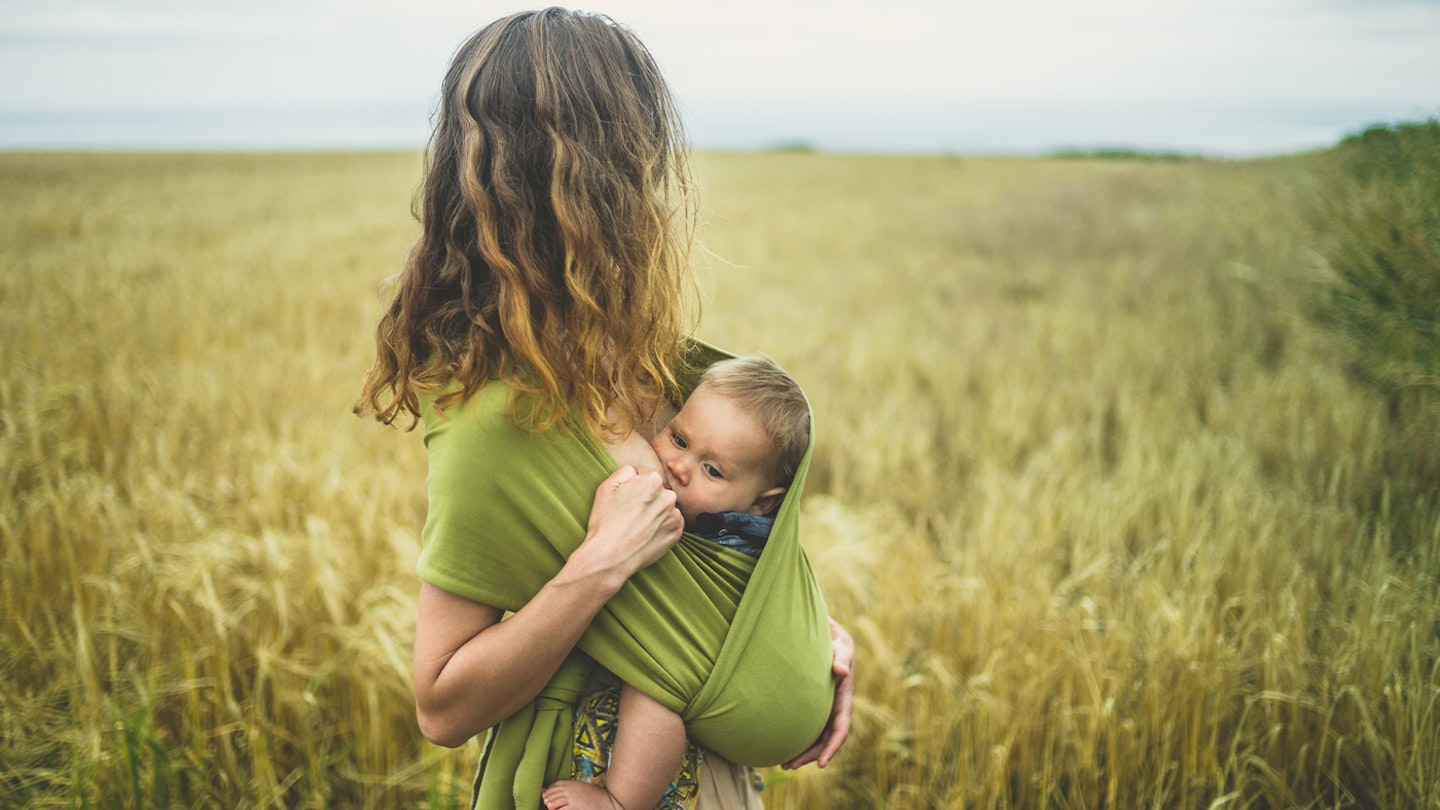We know how beneficial baby wearing is for both you and baby. All that skin-to-skin bonding time is excellent for boosting our oxytocin and encouraging long-lasting breastfeeding - which is why breastfeeding in a sling or baby carrier is so popular.
If you like to keep your baby close and cosy in a sling or baby carrier, you might have considered how to breastfeed in a sling, and how easy it is. Breastfeeding in a sling allows you to quickly get baby in the position to feed anytime they need to while allowing you to carry on with your day.
Many popular baby carriers and slings advertise that they can be used for breastfeeding, but getting you and baby in the right position to feed can often be tricky.
To help you find the right position for you and help you get into the swing of breastfeeding in a sling, we've put together some useful tips and advice with a video to show you how.
And, according to the NCT (National Childbirth Trust), they say: "When it comes to using slings, it’s very important to make sure you’re following a few simple guidelines. You’ll need to check the manufacturer’s instructions, following their advice for whether the size, weight and age of your baby is right for the sling. If the instructions are missing, for example because you bought the sling secondhand, contact the manufacturer directly for a copy or download a copy from the manufacturer's website. Before you use the sling or carrier, check for signs of wear and tear. Don't use it if you have any concerns. The safest baby carrier to use will keep the baby in an upright position, well supported and comfortably close to the your body, where you can always see their face. The child's weight should be distributed evenly across the wearer's shoulders, hips and back."
Benefits of breastfeeding in a sling
As mums, we know that settling down in a cosy quiet spot to feed isn't always as easy as it sounds. Especially if you have a toddler running around too! Feeding on the go using a sling is great for busy mums who are feeding on demand, as it allows your baby to find boob and allows you to multitask. If you're out in public, slings can also provide some privacy for your boobs too, which many mums feel is an added bonus.
Another benefit is the bonding experience. Having your baby nice and close to you is so beneficial for maintaining your close bond and boosting your oxytocin. In some cases, it can also help baby achieve a better latch too, so it can be excellent for feeding.
Baby safety when breastfeeding in a sling
First and foremost, ensuring the airways are clear and that breathing is not obstructed is the most important thing when it comes to carrying baby in a sling for feeding. As baby's breathe through their nose for the first few months of life, and breathe through their nose when feeding, it's essential that their nose is free to breathe.
We'd also recommend following the TICKS guidelines for safe baby wearing.
Once they're done feeding, we'd recommend putting them back in their usual baby wearing position if you're still wanting to carry them.
How to breastfeed in a sling
There are two main positions you can use for breastfeeding in a sling; sat up and vertically laid down. Finding the right position can be tricky, and the right position really does depend on the size of your baby and your body shape.
If you're already using a sling, you'll know what feels normal and secure for carrying. When it comes to positioning your sling for feeding, you might need to put the initial wrap a little lower so that it's around your hips. It may also take a few attempts to tie the sling to the right level of tightness, as it will need to be a little loser so that your baby's mouth is within easy reaching distance of your boob.
It can be very tricky to get the hang of, and we understand, the easiest way to learn how is to watch, so here are a few helpful video tutorials for different positions.
Finding the right sling for breastfeeding
If you're keen to try feeding in a sling, always check with the manufacture of the sling before purchasing as some recommend you don't feed in their slings.
And, remember, finding out the safety of breastfeeding in a sling is crucial , especially for ensuring both the mother’s and baby’s well-being.
Understanding how to position the baby properly helps prevent risks like suffocation or discomfort, while allowing for hands-free convenience and enhanced bonding.
And, prioritizing safety ensures that breastfeeding in a sling can be a comfortable, nurturing experience, fostering a healthy feeding environment and promoting a positive, stress-free journey for both mother and child.
